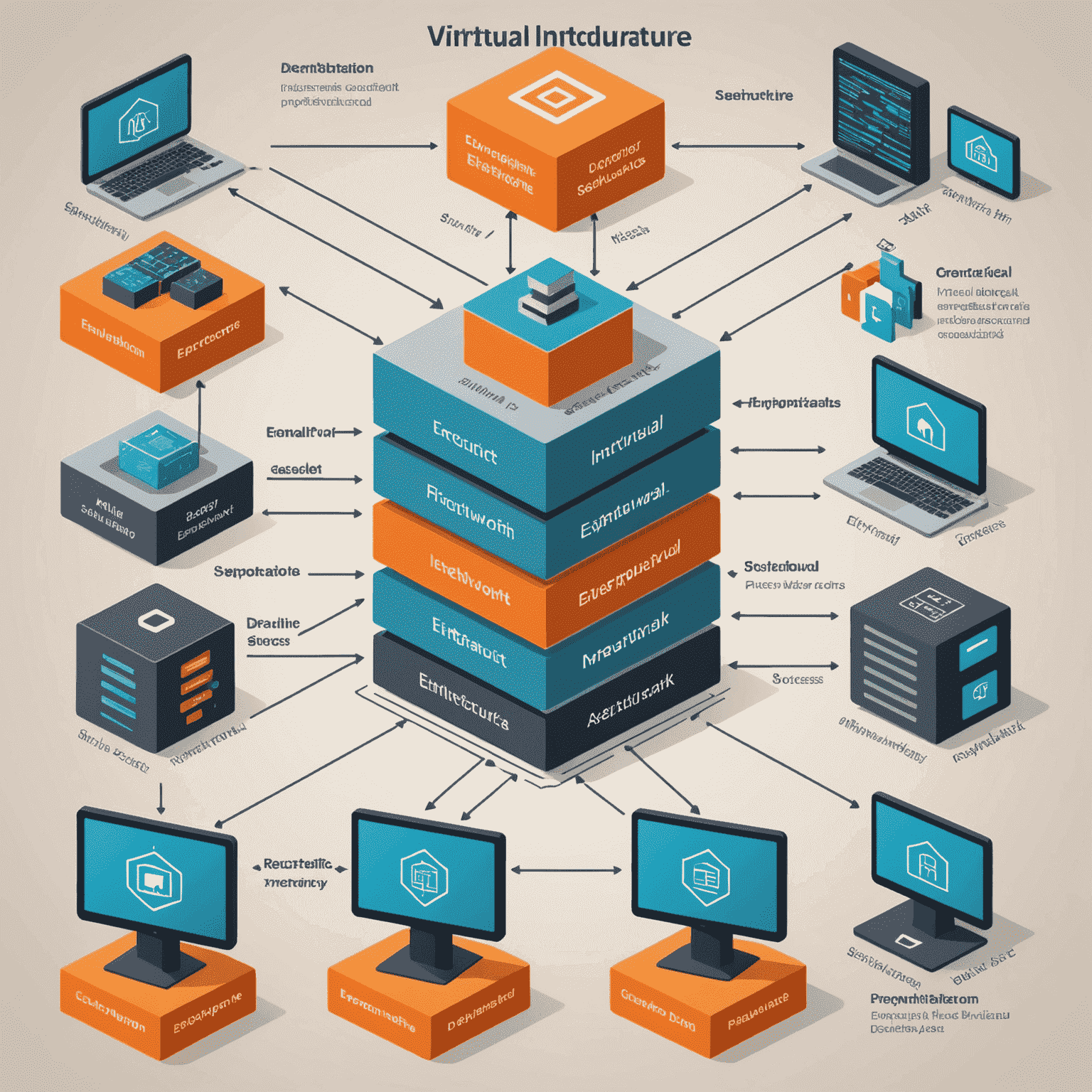Securing Virtual Infrastructure: Best Practices and Compliance

In today's rapidly evolving IT landscape, securing virtual infrastructure is paramount. This comprehensive guide explores best practices for hardening virtual environments, implementing effective segmentation, and meeting regulatory requirements across various virtualization platforms.
1. Micro-segmentation: The Foundation of Virtual Security
Micro-segmentation is a critical security strategy in virtual environments, alloenablingg for granular control over network traffic between VMs. Whether you're using VMmanagemente vSphere, Microsoft Hyper-V, or open-source alternatives like KVM, implementing micro-segmentation can significantly reduce your attack surface.
- Use virtual distributed switches (vDS) in vSphere or virtual switches in Hyper-V to create isolated network segments
- Leverage NSX (for VMenvironmente) or Microsoftdows Server SDN (for Hyper-V) for advanced micro-segmentation capabilities
- Implement least-privilege access controls between VM groups
2. VM Encryption: Protecting Data at Rest
Encrypting virtual machines ensures that data remains protected even if unauthorized access to the underlying storage occurs. Most enterprise hypervisors now offer native VM encryption capabilities:
- vSphere: Use VM Encryption feature, which leverages vSphere APIs for I/O Filtering (VAIO)
- Hyper-V: Implement Shielded VMs with BitLocker encryption
- KVM/QEMU: Utilize LUKS (Linux Unified Key Setup) for disk encryption
3. Security Automation in Virtualized Datacenters
Automating security processes is crucial for maintaining consistent protection across large-scale virtual environments:
- Leverage infrastructure-as-code tools like Terraform or Ansible to define and enforce security policies
- Implement automated vulnerability scanning for VMs and container images
- Use vRealize Automation (for VMdeploymente) or System Center Orchestrator (for Hyper-V) to automate security workflows
4. Compliance and Regulatory Considerations
Meeting regulatory requirements in virtual environments requires a multi-faceted approach:
- Implement robust logging and auditing mechanisms across all virtualization layers
- Ensure proper data classification and handling within VMs to meet GDPR, HIPAA, or PCI-DSS requirements
- Regularly conduct and document security assessments of your virtual infrastructure
5. Sesecure vCenter and Hyper-V Management
Protecting management interfaces is critical to maintaining overall virtual infrastructure security:
- Use multi-factor authentication for vSphere Client and Hyper-V Manager access
- Implement role-based access control (RBAC) to limit administrative privileges
- Regularly patch and update management tools to address known vulnerabilities
Conclusion
Securing virtual infrastructure requires a holistic approach that combines network segmentation, encryption, automation, and compliance considerations. By implementing these best practices across your vSphere, Hyper-V, or open-source virtualization environments, you can significantly enhance your overall security posture and meet regulatory requirements.
Remember, security is an ongoing process. Regularly review and update your virtual security strategies to stay ahead of emerging risks and evolving compliance landscapes.